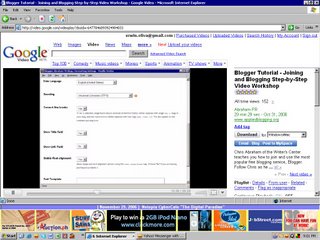Intel helps ‘marginalized’ sectors get on the Internet
By Erwin Oliva
In today’s digital society, the number of people without access to the Internet is still surprising.
Intel hopes to change that in five years.
Committing 1 billion dollars to push initiatives geared for “marginalized” communities in the world, the chipmaker has initiated various projects worldwide, including in the Philippines that intend to connect people to the Internet, educate them about information technology, and develop more relevant community-based information accessible via the Web and other digital means.
 Intel’s program, dubbed Intel World Ahead, has started connecting Philippine communities to the Internet using a Worldwide Interoperability for Microwave Access (Wimax) technology, a new technology that provides wireless Internet access at great distances.
Intel’s program, dubbed Intel World Ahead, has started connecting Philippine communities to the Internet using a Worldwide Interoperability for Microwave Access (Wimax) technology, a new technology that provides wireless Internet access at great distances.
Intel worked with local telecommunications firm Innove to wirelessly connect 150 local residents in Gen. Trias, Cavite and Alabang, Muntinlupa, Intel World Ahead program manager for Asia Pacific Leighton Phillips said.
Intel’s Wimax deployment is part of the Asian Broadband Campaign Wimax trials conducted in select countries like the Philippines, the Intel executives said.
Meanwhile, representatives from Intel met with members of the Association of Southeast Asian Nation (Asean) in Manila recently to discuss projects, and best practices, Phillips said. The Asean members and Intel discussed how they could use public domain to develop web content for marginalized and rural communities.
The Intel executive said that content on the Internet remains irrelevant to most marginalized societies, while cost of access remains expensive.
Intel was committing US$ 250,000 in an Asean project to produce more relevant content, and was offering an e-learning software called SKOOOL.
The Intel World Ahead program intends to push various programs to developing regions in the form of accessibility, connectivity, education, and development of applications and content.
The US$1-billion commitment for five years intends to fund efforts to connect the "world's next billion users, while training 10 million more teachers and 1 billion students," Intel said.
Intel is now working with the Philippine Commission on Information and Technology (CICT), United Nations Educational, Scientific and Cultural Organization National Commission of the Philippines, and the Asian Institute of Journalism and Communication for the Intel World Ahead project.
Florangel Rosario Braid, chairperson for communication of UNESCO National Commission of the Philippines, said Intel’s project is consistent with its plans to develop relevant digital content for marginalized communities.




